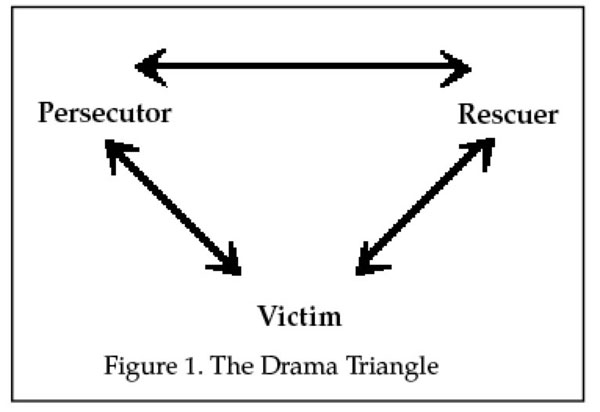Drama Triangle Positions: I
The first two positions on the Triangle are familiar to most of us, but rarely brought to conscious awareness. The first describes burnout itself (which Rescuers always become), and second, the Persecutor, is a frequentstopping-off place for Rescuers on their way to becoming Victims - often exhibited in their family or in other intimate relationships as a pressure-relief or compensatory outlet of building frustrations.
Victim
The Victim position is shown (appropriately) on the bottom of the triangle in Figure 1. In the Victim position, we feel "not-ok" and perceive others as being more ok than we are. We secretly hope we can expose their not-ok-ness and thus justify remaining in our own familiar misery. One payoff of dramatizing this position is that we can excuse ourselves from being responsible for our plight because, after all, we�re just helpless Victims. Helping professionals encounter many professional Victims in outpatient clinics, welfare offices, and courts of law. Victims seem to send out invisible signals that Rescuers can pick up instantly across a crowded room so the two are drawn to each other like flies to honey.

Persecutor
In this role we think we are "more ok" than others and set up relationships in which we are the dominant one, criticizing and judging our "inferiors." This role is often acted out by senior administrators with their employees, doctors with nurses, teachers with students, or law enforcement or military personnel with their citizenry. Behind the facade is usually an unhappy person who does not know how to experience love and be close to people.


